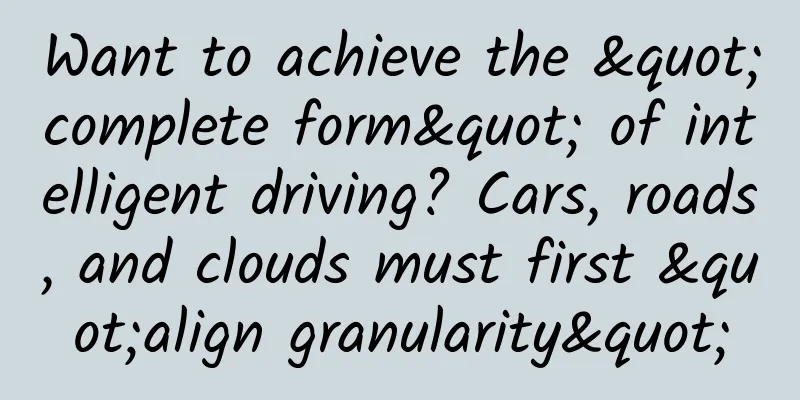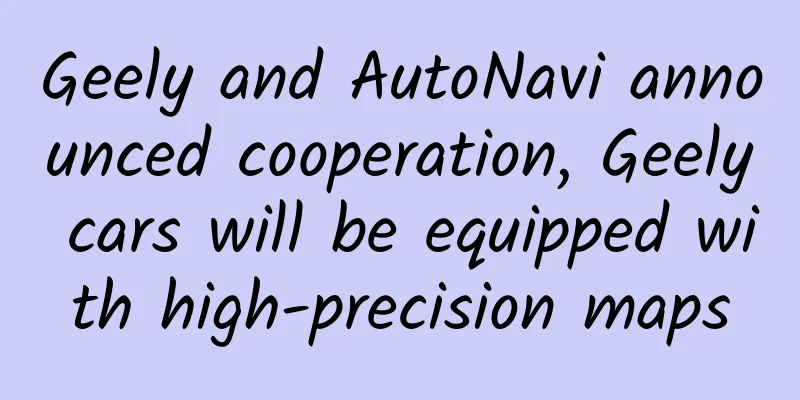Want to achieve the "complete form" of intelligent driving? Cars, roads, and clouds must first "align granularity"

|
With the mature development of new energy intelligent technology, consumers pay more and more attention to the intelligent driving ability of vehicles when buying cars. Although various brands are currently vigorously promoting the computing power of vehicle products, the blind spots and beyond-visual-range perception of moving vehicles are barriers that cannot be overcome by single vehicles. In the long run, it is not enough to rely solely on the information acquisition and computing capabilities of the vehicle itself to build the ultimate form of the future intelligent transportation system. Therefore, the vehicle-road-cloud integrated technology route is regarded as a complete solution for intelligent driving and intelligent transportation. The "China Solution" for vehicle-road-cloud integration uses China's advanced 5G and big data technologies to promote the intelligent integration of vehicles, road infrastructure and cloud platforms in light of China's urbanization and traffic characteristics. The recent intensive introduction of domestic and foreign policies has also highlighted the importance of this solution. Last year, the China Society of Automotive Engineers released the "Vehicle-Road-Cloud Integration System Part 2: Vehicle-Cloud Data Interaction Specifications", which provided standard guidance for the development of the industry. What is the vehicle-road-cloud integrated system? Simply put, the vehicle-road-cloud integrated system is a cyber-physical system that fully integrates information related to cars (cars), roads (roads) and cloud computing platforms (clouds). Through Internet connectivity, cars can not only perceive the surrounding environment, but also obtain distant information, such as real-time traffic conditions, route planning, driving environment, etc.; and ensuring the standard and smooth interaction of car-road, car-cloud and road-cloud information is the basis of Internet connectivity. What is vehicle-cloud data interaction? Imagine that your car can have a real-time "dialogue" with the city's traffic system, knowing where you are going, the traffic conditions on the road, and even being able to predict and avoid possible congestion. This is the "magic" of car-cloud data interaction: through high-speed data transmission, cars can communicate with the intelligent system in the cloud, thereby realizing intelligent traffic management. What changes will the implementation of the new standards bring to us? First, safety is improved: cars can receive real-time updates on road conditions, including information about potential dangers and accidents, so that they can take preventive measures to avoid collisions. Second, travel efficiency is optimized: through data analysis in the cloud, cars can more effectively determine the best route, avoid traffic rush hours, and greatly save travel time. In addition, energy consumption can be reduced: intelligent route planning and driving suggestions can help reduce unnecessary acceleration and braking, thereby reducing fuel consumption and emissions. Behind the technology The key to achieving all this is standardized data interaction. The new standard defines the data format, transmission rules and interaction protocols, ensuring seamless communication between cars of different brands and models. This requires the joint efforts of automakers, traffic infrastructure builders, cloud computing service providers and government departments. What it means to the general public For the general public, the release of this standard means: fewer traffic jams, as the intelligent transportation system will reduce congestion caused by traffic accidents and lack of understanding of road conditions; more environmentally friendly travel, as optimized driving suggestions will help reduce fuel consumption and emissions and protect the environment; and a safer driving environment, as potential dangers can be better avoided by receiving cloud information. Future Outlook With the continuous development of intelligent connected vehicle technology, we have reason to believe that future travel will be smarter, safer and more convenient. The release of the new standard will also drive the entire automotive industry towards intelligence and networking. The following is a detailed interpretation of the standards: |
>>: Look! China's most magnificent animal wonders
Recommend
Form costs reduced by 30%, home decoration advertising case!
With the further deepening of regulation and cont...
US judge: WeChat ban violates user rights and will not be allowed to be enforced
After a U.S. district court urgently halted the U...
What should you do to plan an event that will go viral on WeChat Moments?
How to create an event that will go viral on WeCh...
UNESCO: Report on Artificial Intelligence Curriculum in Primary and Secondary Schools
Recently, UNESCO released the report "Artifi...
Absolutely useful information! Nine abnormal ways of operating Taobao and Tmall
Text/E-commerce consultant Lao Lu First summarize...
Don’t know how to develop VR games? Unity 5.3 official VR tutorial is released - Series 2
[[163670]] Laying the foundation In order to prep...
How to quickly register multiple WeChat mini programs?
Q: How to quickly register multiple WeChat mini p...
Enjoy KTV on your mobile phone. Tianlai Karaoke's new version opens up diversified handheld entertainment
The performance of smart phones is becoming more ...
Zhang Wenhong leads the way! The first domestic oral COVID-19 drug report is released
On May 18, the first "treatment report"...
Best Practices for Customizing Android BaseAdapter
Although many new projects are using RecyclerView...
Volkswagen's all-electric vehicle deliveries increased 96% in 2021
Volkswagen said it increased deliveries of its al...
Sad! The first person to study giant pandas in China has passed away...
Evening of February 16 Professor Hu Jinchu, known...
Snakes and frogs fight each other in nature, but this bronze artifact makes snakes and frogs live in harmony
In the exhibition hall of the Liangshan Museum in...
Will Apple lock the charts for Christmas? CP Guide Complete Guide!
There are a lot of things CP can do during the App...
4 keywords to ignite social media marketing, everything you don’t know is here!
During our practice, we found that many companies...









